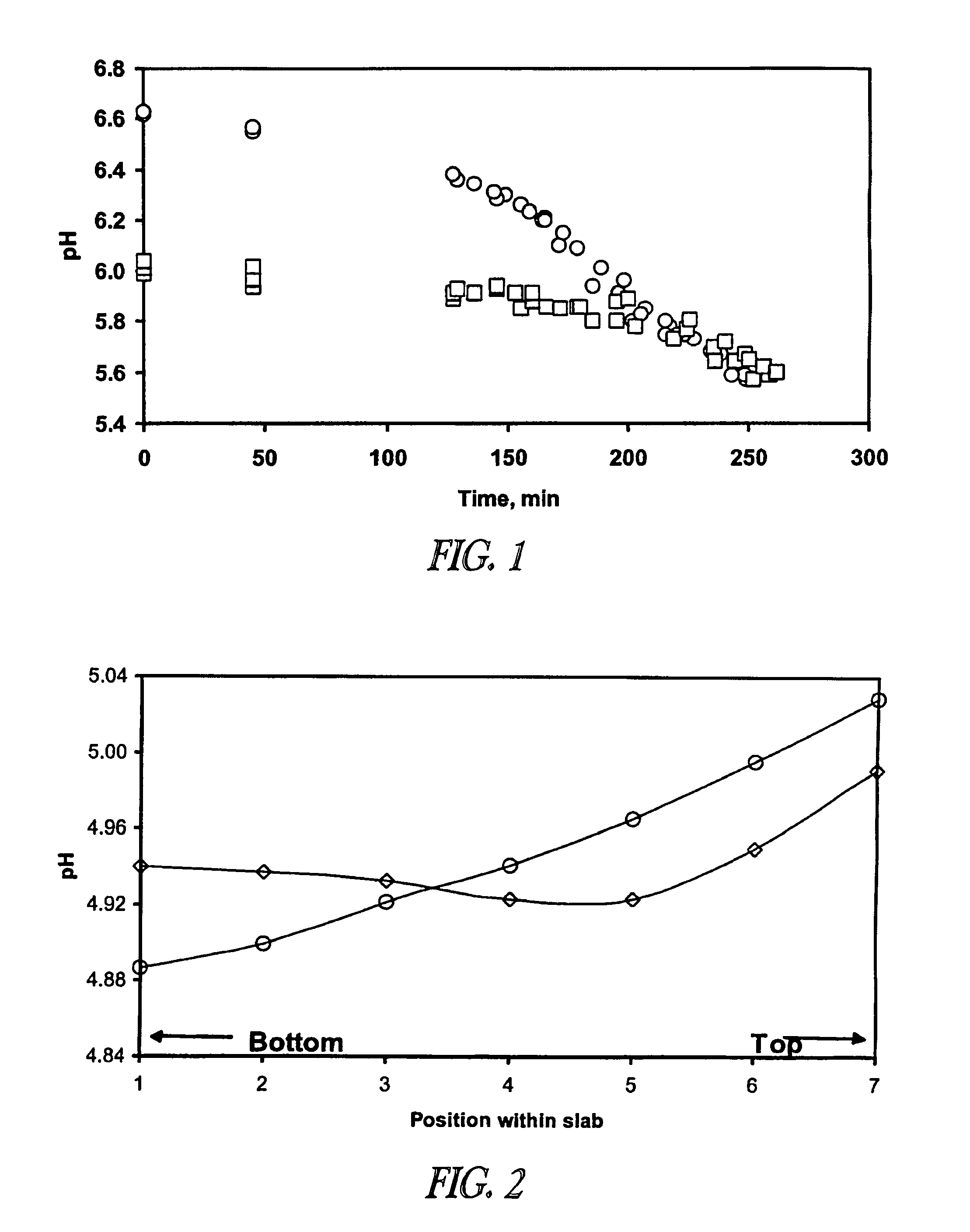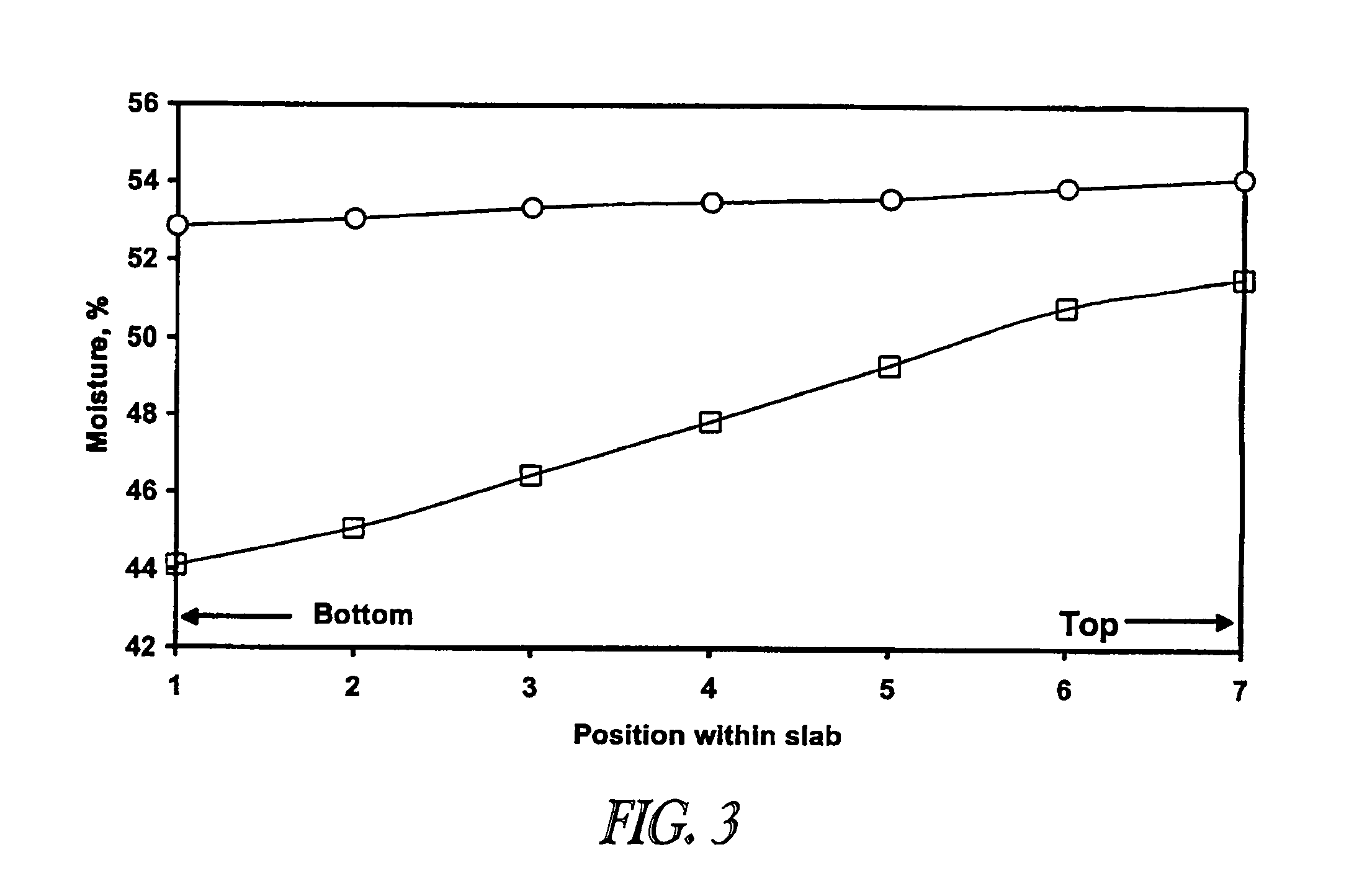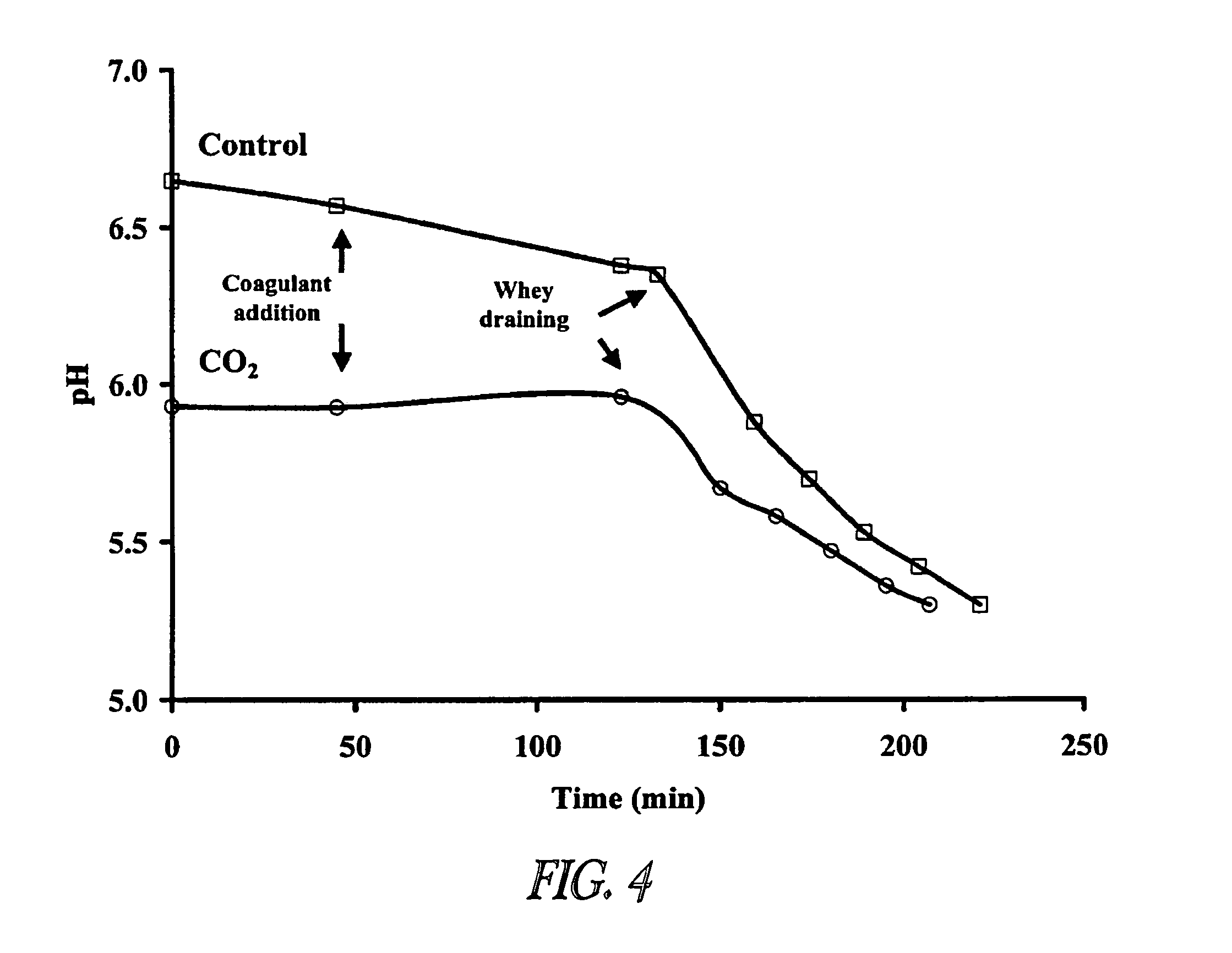Uniformly moist cheese
a technology of uniform moistness and cheese, applied in the field of making blocks of cheese, can solve the problems of driving some oxygen out of the solution, and achieve the effects of optimizing the growth of cheese-making bacteria, improving the product, and low oxygen
- Summary
- Abstract
- Description
- Claims
- Application Information
AI Technical Summary
Benefits of technology
Problems solved by technology
Method used
Image
Examples
example 1
Comparison of Procedures for Controlling Moisture Migration in Cheese
[0068]In this Example, three approaches to reducing moisture migration in 290 kg blocks were evaluated: (1) addition of hydrocolloids (e.g., starch, cellulose) to milk during cheese making, (2) addition of denatured whey proteins (e.g., Simplesse®) to milk during cheese making, and (3) addition of CO2 to milk to shift casein monomers and calcium from the micelles into the water phase of the milk, prior to rennet addition, to bind water and reduce moisture mobility in the cheese. Some of the materials in the first two approaches increased the moisture content of the cheese, but did not make a major reduction in moisture migration during cooling of the cheese. The addition of CO2 to milk was very effective at reducing moisture migration in cheese during cooling and the results of that work are reported below.
Materials and Methods
Milk Carbonation
[0069]The milk carbonation system was a countercurrent stainless steel tu...
example 2
CO2 Cheese Making Procedures
Materials and Methods
Experimental Design and Statistical Analysis
[0100]Two 18 kg blocks of full-fat Cheddar cheese were. One block was made from milk with added CO2 and another control block was made from milk without added CO2. Cheese was made on three different days (using a different batch of milk each day) over a one-week period. A one-way ANOVA was used to determine if there was an impact of CO2 on the composition and yield of the cheese. The least significant difference (P≦0.05) test was used to compare treatment means if the F-test for the statistical model was significant (P≦0.05). The PROC GLM procedure of SAS was used for all data analysis (SAS version 8.02, 1999-2001, SAS Institute Inc., Cary, N.C.)
Milk Processing and Cheese Manufacture
[0101]Milk processing and cheese manufacture were completed on the same day. Each day, raw whole bovine milk was received from the Cornell University dairy farm. The raw whole milk was pasteurized with a plate he...
example 3
Less Water Migration and More Uniform Moisture Content is Observed in Cheese Made from Milk Preacidified with CO2
Experimental Design
[0138]One 18-kg block of milled-curd Cheddar cheese (35×29×19 cm) was manufactured per treatment (from milk with added CO2 and without added CO2) on three different days.
[0139]Pasteurized whole milk was carbonated to approximately 1600 ppm CO2, which resulted in a milk pH at the vat of 5.93 compared to 6.65, at 31° C., for the control. Cheese manufacturing conditions were kept constant for the two treatments with the exception the whey from the milk with added CO2 was drained at pH 5.96 compared to 6.35 for the control. The addition of CO2 decreased the total manufacturing time because of the shorter stir-out time. The usage rates of chymosin and salt were the same for both treatments. Cheeses were pressed overnight (17 h). When the cheeses were removed from the press the temperature in the center of the blocks was about 29° C. A more detailed descript...
PUM
 Login to View More
Login to View More Abstract
Description
Claims
Application Information
 Login to View More
Login to View More - R&D
- Intellectual Property
- Life Sciences
- Materials
- Tech Scout
- Unparalleled Data Quality
- Higher Quality Content
- 60% Fewer Hallucinations
Browse by: Latest US Patents, China's latest patents, Technical Efficacy Thesaurus, Application Domain, Technology Topic, Popular Technical Reports.
© 2025 PatSnap. All rights reserved.Legal|Privacy policy|Modern Slavery Act Transparency Statement|Sitemap|About US| Contact US: help@patsnap.com



